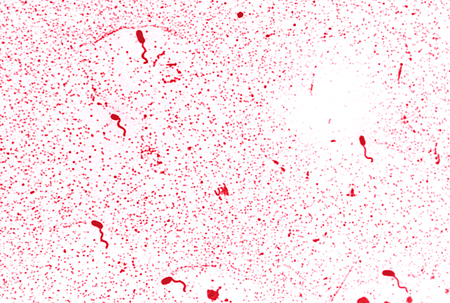Aetiology
The causative agent in cholera is the non-spore-forming, gram-negative, curved rod-shaped bacterium Vibrio cholerae. Drinking contaminated and inadequately treated water or eating undercooked seafood leads to an inoculum of pathogens that reach the small intestine. This is made easier if gastric acid production is reduced: for example, with concurrent use of antacids or achlorhydria.
The two cholera toxin-producing (toxigenic) serogroups of V cholerae are O1 and O139.[2]
O1 strains of V cholerae have caused pandemics of cholera for more than 200 years.
The O139 Bengal serotype has been recognised only since 1992 and, so far, has not spread beyond Asia, with some evidence suggesting that it has been seen less commonly over the past few years.[21]
Non-O1, non-O139 (non-toxigenic) strains can cause diarrhoeal disease identical to classical cholera but do not cause large outbreaks of disease. They can also cause extraluminal disease, especially in immunosuppressed patients or those with hepatic disease.[22][23][24]
[Figure caption and citation for the preceding image starts]: Vibrio cholerae: Leifson flagella stain (digitally coloured)CDC/Dr William A. Clark [Citation ends].
Pathophysiology
In the upper small intestine, bacteria replicate rapidly and adhere to the epithelial cell surface, having penetrated the outer mucus layer using pili. The bacteria then produce vast local quantities of cholera toxin. This 84,000-kDa protein is made up of 5 binding (B) units that latch the toxin to GM1 ganglioside receptors, allowing intracellular placement of the single active (A) unit, an adenosine diphosphate (ADP)-ribosylating toxin, which irreversibly stimulates the intracellular enzyme adenylate cyclase.[25] Adenylate cyclase breaks down ADP to cyclic adenosine monophosphate, a powerful intracellular signalling molecule.
Ultimately, increased chloride secretion and inhibition of sodium chloride resorption leads to massive volumes of diarrhoea. There is also inhibition of water resorption in the colon, augmenting the effect. Loss of large volumes of salt and water leads to systemic volume depletion. Hypokalaemic metabolic acidosis is driven by potassium and bicarbonate loss, which can affect muscle strength and lead to exhaustion as patients increase their respiratory rate to compensate.
There is no breach of mucosal integrity. Thus, protein and blood are not lost in the diarrhoea. Cholera diarrhoea is watery and replete with infectious bacteria. This quickly leads to secondary cases among carers, particularly if infection control is difficult to sustain. Contamination of water supplies and the environment can quickly occur, leading to further outbreaks.
Classification
Infecting organism serogroup, biotype, and serotype
More than 200 strains of Vibrio cholerae have been identified, but only two serogroups are responsible for epidemics and pandemics: V cholerae O1 and O139.[2][3] Serogroup O1 strains can be divided into two biotypes, classical and El Tor, and each of these can be divided into three serotypes: Inaba, Ogawa, and Hikojima (rare).[1][4] Biotypes are distinguished by certain biochemical properties and susceptibility to bacteriophages, whereas serotypes differ in polysaccharide antigens.
The current (seventh) pandemic is caused by O1 strains of the El Tor biotype.[1] There are no major clinical differences between the two serotypes or biotypes, although El Tor biotype strains expressing classical biotype cholera toxin have been reported to cause an increased need for intravenous fluids.[5]
Serogroup O139 was identified in Bangladesh in 1992 and cases have so far been limited to Asia. Although V cholerae O139 has caused outbreaks in the past, it is currently only implicated in sporadic cases.[6]
Use of this content is subject to our disclaimer